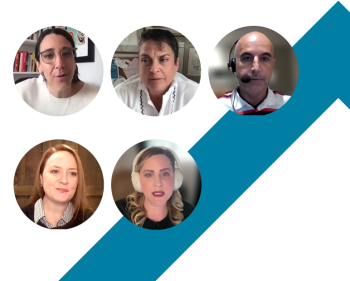
The second session looked at ways of moving away from teaching and research environments where people with disabilities seek individual accommodations to one with classrooms and research environments that are already anti-ableist and inclusive. The panelists explored intentional inclusion, universal design principles, the potential limitations of universal design, the problem of “access fatigue,” and some ways institutions can create more inclusive and accessible teaching, learning and research environments.
Limitations to the current accommodations model
One panelist noted that the current system of accommodations perpetuates a deficit model in its approach to students with disabilities. It judges students with disabilities as missing something and as requiring an intervention to access a mainstream design. Making students get documentation for an accommodation can be a depersonalizing practice.
The current accommodations model also creates a lack of responsibility and accountability from faculty to support students with disabilities, also known as a culture of referral. When an issue arises with access, it is often referred to someone with expertise in accessibility. Rather than train teachers to teach inclusively, the default is to rely on someone else to “deal” with accessibility.
Another panelist argued that accessibility services budgets, under an individual accommodations model, are, in many ways, unsustainable. Funds are currently allocated to address individual access needs without addressing system-wide change. More money needs to be put into training and opportunities for faculty to think about ways they can change teaching methods to be more inclusive. Faculty also need material supports and incentives to do this work. Overwhelming numbers of individual student access needs are — in the absence of system-wide institutional supports — contributing to faculty burnout.
We spend an awful lot of money on accommodations, with no view of changing the way we teach and learn. – Frederic Fovet
The promises and challenges of universal design for learning
Universal design for learning (UDL) is an educational framework that strives to create accessible, welcoming and inclusive learning environments for all learners, including students with disabilities or those with other learning needs. It is inclusive design that engages with people authentically by considering unique cultural, social and other needs that extend beyond those of so-called “typical” users. An example of a UDL practice includes providing information in multiple formats such as text, images, videos or audio recordings. Another is providing closed captions, transcripts or audio descriptions of multimedia content.
Incorporating universal design into courses is not without it challenges. Faculty may need to adapt their approaches to UDL when there is an unanticipated learner that requires something new or different. On many campuses, universal design implementation is left up to an individual or a small committee. Accessible teaching and learning requires creativity and additional labour.
UDL can be challenging to implement, particularly when the responsibility of making courses accessible falls on individuals, for example a course instructor. One panelist shared examples of a practice known as collective access as a way of inviting students and faculty to share in the work of accessibility and universal design. Some campuses have large student populations and being able to manage and implement universal design across all courses will be a daunting challenge. Post-secondary institutions are often large, fragmented and bureaucratic. There is very little research showing how to guide campuses through change.
Finally, it can be said that universal design works until it doesn’t, meaning that it does not completely eliminate the need for individualized accommodation. So in this way, it is not truly “universal.” Post-secondary institutions need to do more to welcome those with unanticipated access needs.